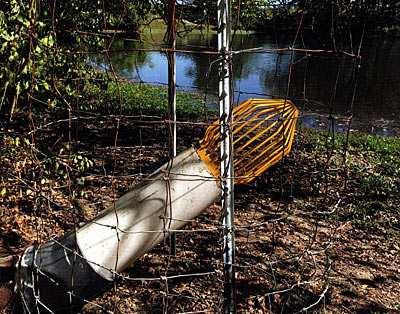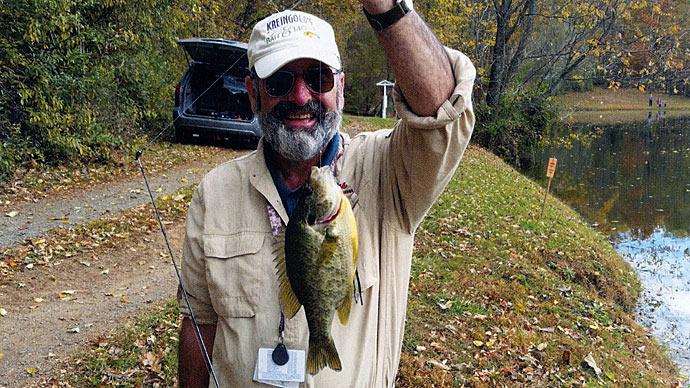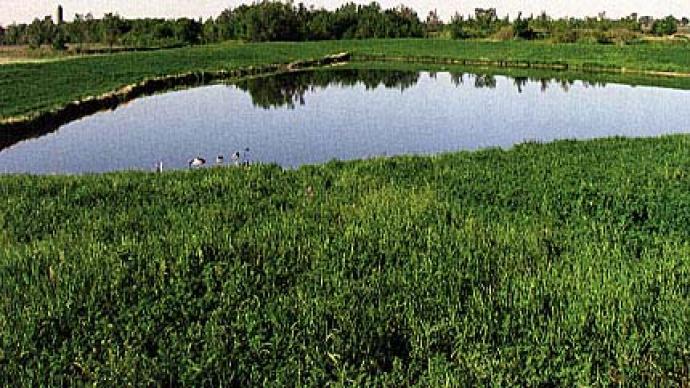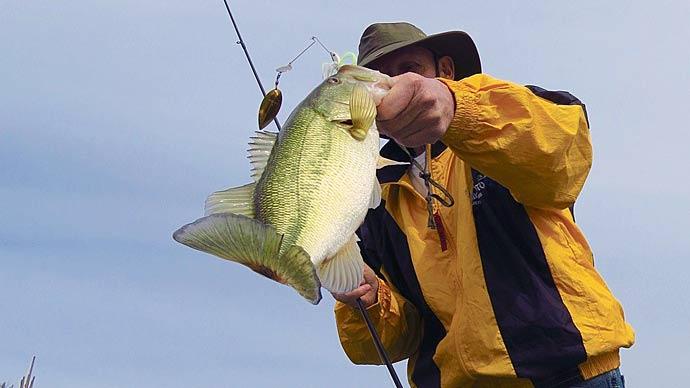
Sometimes life gets in the way of being a pondmeister. As last summer heated up, our youngest graduated from college (Roll Tide!), our oldest was transferred from Chattanooga to Chicago as her career advanced, we sold the family home and downsized to our empty-nester abode—all while planning a 30-year wedding anniversary trip. And did I forget to mention how busy things are at the office? Who has time to be an effective Pond Boss on top of all that?
Yes, the last 18 months have been hectic. Over that stretch of time I have learned quite a bit about transitioning to the next chapter in life, but I have also learned much about ponds.
Where to begin?
In my previous article, I introduced you to three ponds on family property located in the southwest corner of Macoupin County, Illinois. I made up my mind to meaning-fully manage these bodies of water (6.5,1.6, and 1.5 acres) over the previous winter after literally decades of thinking about it, but when it came right down to it, taking very little meaningful or long-lasting action. I knew things had to change if we were to bring these ponds back to their glory days and provide consistent quality angling experienced in the past.
Fishing the Big Lake, which had been producing good-quality Largemouth bass consistently for the last 40+ years, spoiled us. Virtually all-season long, we caught good numbers of 2-4-pound bass. We rarely had a fishing excursion that would qualify as bad, but the quality of fishing had slowly deteriorated in recent years, and nearly all of the fish we hooked were in the 12-14-inch range. And yes, we almost exclusively followed a catch and release philosophy. Granted, we caught a lot of bass, but we had not reeled in anything 5 pounds or larger in a few years. It took a while to sink into my thick skull, but I finally realized something was wrong and action needed to be taken. The big question was, "Did I bite off more than I could chew?"
Keep reading to find out.
The two smaller ponds, Bob Jones Lake and Lake #1, suffered on and off over the decades from the very common stunted bass/big bluegill issue. I suspect many of you are also currently experiencing or have experienced something similar in the past. My guess was that the forage base had been meaningfully depleted in these ponds. Nonetheless, one thing was for sure, I knew all of our bodies of water held too many bass.
So, when the process started in the spring of 2016, the first step was to hire a professional to survey the ponds, provide an assessment of the current status of each, and then come up with a plan to improve these fisheries over time. We knew there were no overnight solutions. In early May all three of our ponds were electro-surveyed by Nate Hermann of Herman Brothers Lake and Land Management from Peoria, Illinois. Based on my previous research, and a good amount of actual fishing, I went into this survey guessing that certain problems existed in each of these bodies of water. To some extent my suspicions were correct, but I was surprised by some of the results, as well as some of the recommendations given to me by the lake management company I had hired.

As mentioned, prior to the survey, I was convinced all three ponds were suffering from a depleted forage base and would need to be stocked with adult native northern bluegill. But surprisingly, when the study was done and the results reported, only one of the three had too few bluegills (Bob Jones Lake). I had to laugh as that was the one pond we always considered a go to spot to catch large numbers of big bluegill. So much for relying on my gut feeling.
Nate gave us harvest targets for all three ponds. Doing the math, he recommended we take approximately 40 bass per surface acre out of each pond. That equated to around 250 fish for the Big Lake. When I read the survey report and saw the harvest target, my stomach began to churn. I literally cringed at the thought of trying to explain the harvest strategy to my dad. Remember, I was brought up in the catch-and-release-throw-the-small-ones-back-so-they-can-grow world. We told our guests to release all bass caught. Prior to the start of this pond rehab project, I actually felt bad when we kept fish. This magnitude of harvest was going to take a big mental adjustment on my part, but I knew the science behind the recommendation was good. I feared we would struggle to actually execute the plan, but we decided to bite the bullet and take out the fish. I knew that was the right decision.
Other recommendations included adding habitat to all three of the ponds, especially brushy cover. There were not enough places for forage fish to hide. Keep in mind all these ponds are at least 65 years old. As is the case with many old ponds and reservoirs, the original submerged timber had almost entirely disintegrated over the years and needed to be replaced. But we were happy to discover that our population of golden shiners in the Big Lake was in excellent shape. Our plan included adding 400 adult native northern bluegills to Bob Jones Lake to help replenish the forage base. We also decided to add bluegill to the other two ponds for genetic diversity.
By the time you read this article, Bob Jones Lake (1.6 acres) will be up and running with the management plan almost fully implemented. This is the pond where we decided to have a little fun. We took the advice of our pond management company and stocked 400 adult bluegills (5"-7") and 50 1-1.25-pound Largemouth bass. We added 25 hybrid striped bass in the 5" to 8" range last fall. We installed a quality solar-charged, battery powered fish feeder and provide a high-quality protein pellet diet to these stackers. Four or five brushy piles of cover were added in water 5'-7' deep. We are hoping these new fish will also adjust to eating natural forage. We are in the process of completing a dock, and have extended the overflow pipe to raise the water level by nearly two feet at full pool.
At our prize jewel, the Big Lake, we mostly focused on harvesting fish and adding sunken timber and brushy cover. We reached our harvest target of 250 bass last fall. We also harvested in excess of 75 large crappie in the 11"-14" range. We cut down groups of trees in multiple spots around water's edge. Using a Jon boat with a 4.5 hp motor and friends wearing chest waders, we pushed, pulled, and stacked the cut trees out into slightly deeper (4'-7') water. We immediately saw smaller forage fish and intermediate sized bass swimming into this new cover, literally before we were even out of the water and back on dry land. That was a real motivator! We caught a good number of bass in and around this newly added structure over the course of last year.
Our other small pond, Lake #1 (1.5 acres), saw less attention from this pondmeister-in-training during 2017. In the past, we caught numerous 5-6-pound bass out of this body of water. But this pond receives a good deal of agricultural runoff. We typically battle lots of filamentous algae every season, usually starting in mid-June. Last year was no exception. We stocked bluegill here in order to beef up the genetic diversity and produce more forage. We removed approximately 30 bass (we fell short of our harvest target here). Starting this spring, our plans are to make more habitat and structure/cover improvements in this pond, as well as removing the rusted-out cast iron overflow pipe and start using the emergency spillway for runoff. The cost to replace the pipe would have been a budget-buster. This will raise the water level more than two feet in this somewhat shallow pond.
As you read this, we are beginning the third year of our project. My learning curve is still steep, but we are making progress. We are already seeing some improvement in the relative weights of the fish we are catching in the Big Lake.
This year my goal is to better-control filamentous algae as well as excessive vegetation like coontail and sago pondweed. Filamentous algae has been a big problem for us in the Big Lake and Lake #1 over the years and a huge source of frustration. It felt like complete failure when both of these ponds were more than 60% covered with algae in late July, after spending time and money attempting to fight the problem earlier in the spring and summer. I have learned algae and nuisance vegetation problems can quickly get out of hand if left unattended for even just a few weeks during warm weather. To help with the vegetation problem, we also added triploid grass carp at a rate of 4-6 per acre in each of the ponds. We used these fish successfully in the same ponds in the late 1990s, but never restocked. The survivors from those earlier stockings all appear to be in excess of 35 pounds when we see them sunning themselves in the shallows on windless days.
We are also starting the maintenance harvest part of the plan this year. Initially, we will annually harvest 20 bass under 14 inches in length per surface acre from each pond. With approximately 9.6 acres under management, that translates into taking 190-195 bass in total out of our three bodies of water. And of course, in the Big Lake, we will continue to keep every crappie we catch.
So, there you have it. That is where we stand on our long journey. We are a bit more than two years into a project, which realistically, will never completely end. We have experienced frustration and failure, but also some success. Most of all, it has been fun and a great learning experience. I will continue to keep you updated on our progress.
Reprinted with permission from Pond Boss Magazine



